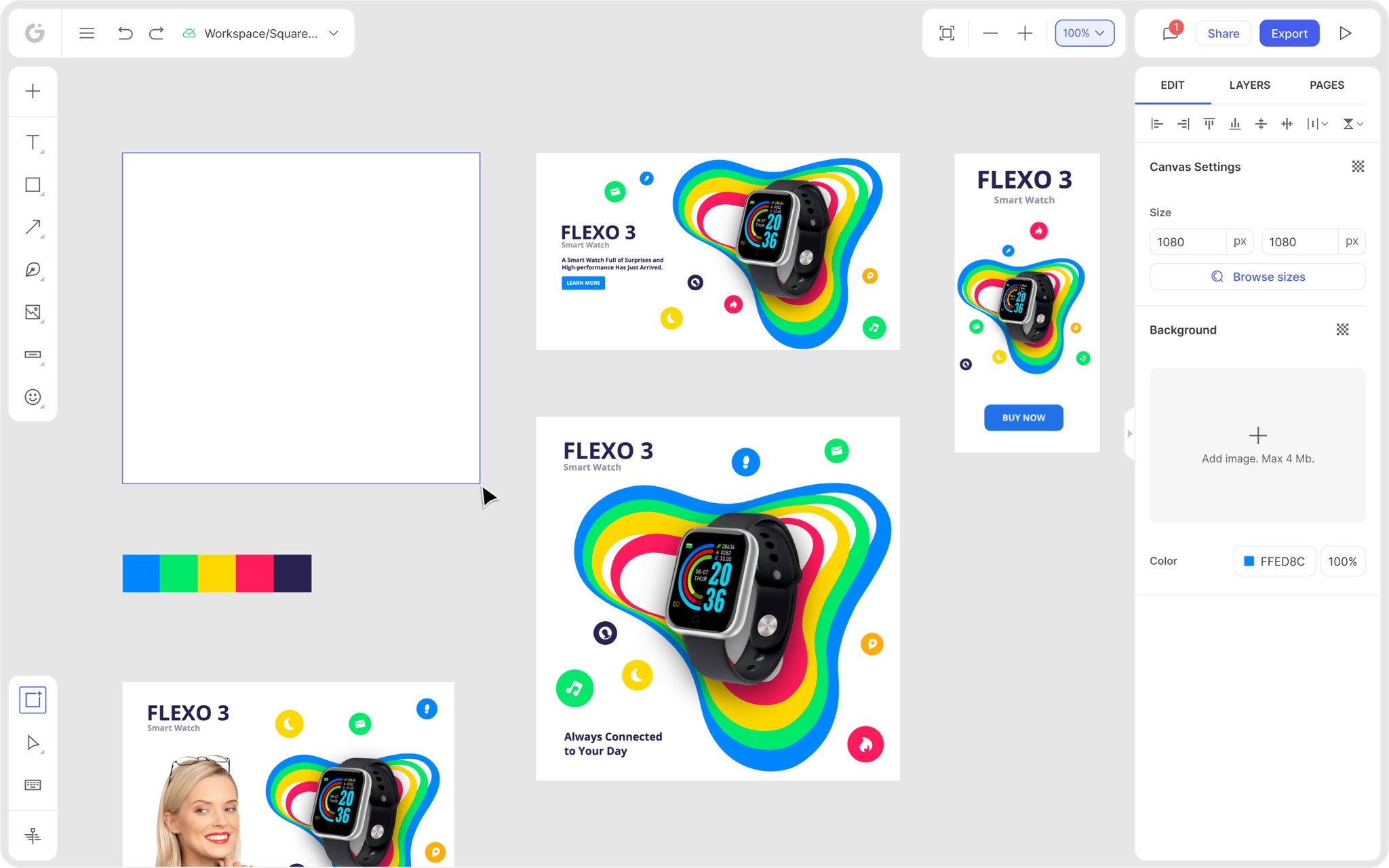We’re thrilled to announce that Glorify is officially partnering with Contra! This collaboration opens up exciting opportunities for designers, marketers, and creators in the Glorify community.
Posted Nov 9, 2022
•
9 min read

Affiliate Marketing, Email Marketing, Marketing
tips-on-researching-your-target-audience
Target audience research is the crucial skill any marketer or business owner doing their own marketing needs to master. Knowing exactly who is buying and using your product or services will help you provide a better experience for your customers, improving customer satisfaction, and ensuring further sales.
We have curated a list of the best tips, by the experts in the industry, to help you put your best foot forward when it comes to reaching out to people you really “want” to reach out to –
1. Keep an open mind and be aware of consumer need
Listening to your customers and actual human conversations are the simplest way to get to the audience you desire. According to Andy Crestodina, Co-Founder/Chief Marketing Officer at Orbit Media Studios, Inc., “If you can’t ride along on sales meetings, ask to listen in on some phone calls. If your site has a chat feature, read the chat logs,” he advises. Andy also recommends catching up with your customer support team to be up-to-date with the most common questions, queries, or complaints that are coming in.
Having hands-on knowledge of what is really desired by your consumers, helps you understand if they really are your consumers and what else can be offered to make them your permanent consumers.

2. Conduct digital surveys
This one can really just begin at your app, website, or your social media accounts. You can use tools like SurveyMonkey or even just simple Google Forms to let your consumers share their experience with you. Though a lot of users might actually ignore the survey prompt, sometimes dissatisfied customers are actually also looking for just a place to the event. This actually works great for your business because you need to know what is making your consumer unhappy to be able to avoid it in the first place.
“Pop up surveys on our website used to be a great tool to discover bugs or confusing elements in our interface,” shares his experience Igor Kaliuzhnyi, Chief Product Officer at Depositphotos.

3. Set up one-on-ones with your buyers
This one usually works best for small businesses or businesses that are still scaling. You can always set up live chats or even schedule calls with your most frequent buyers by blocking their calendar on a particular date suitable for both. A lot of home-grown businesses do this to get a candid chat with their consumers and understand their needs. Unlike surveys, a person really “talk” on a phone call and that is why this works really great.
Julia McCoy, CEO of Express Writers recommends “Create a social media offer or an email (depending on if you have a list or not) and offer a free service in exchange for a 30-minute interview (I’ve offered a free copy of my book or a gift card in the past). Make sure it’s with someone who is interested in or has bought your product already. Focus on finding out their interests, setbacks, and pain points,” she iterates.

4. Identify a sample group
“Gather a small group of consumers who fit your customer profile and ask them specific questions,” suggests Shayla Price, the marketer for Shopify Plus, Kissmetrics and Yotpo, HostGator amongst others.
By asking people questions that are relevant to your business and product can really help you get a basic, ground reality check of what is expected out of you. The emphasis remains on sticking to objective, brand and product-specific questions that cannot end up as ambiguous answers.

5. Hang out on forums where your consumers could be
A very common yet very effective way of identifying your target audience is by being in the same space as your consumers. If you are a business that primarily sells on Amazon or maybe even in physical stores, you can still always reach out to your audience on other social media platforms. Because, well, at the end of the day, that is where all thoughts and opinions are expressed. Make use of the forums, talk to your clients on chats, comment sections, and host live Q&A sessions.
“We have a few different ways to research our audiences – some of our favorites include reading through comments and looking at discussions in forums,” shares Ahava Leibtag, President at Aha Media Group.
Some businesses even have the option of reaching out to their audience face to face. For example, if you sell some kind of dips in a supermarket, you can always visit the supermarket and linger around the shelves where your dips are stored. You can reach out to people who may look interested and talk to them about their views on your product and even offer free samples if they haven’t tried it out yet. While talking face to face might not be possible for all, joining a forum conversation is a trick that should be tried out by all businesses.

6. Be up-to-date with what is happening on Social Media
By keeping a close eye on your audience’s behavior on Social media and perhaps, by even keeping up with the trends of Social Media, you can always understand better about what is expected or what more can be done. Social media is also great for keeping a check on your competitors.
“Social media can teach you so much about your target audience,” says Lilach Bullock, Founder at Lilach Bullock Limited. “Use social listening tools to constantly monitor your target audience and learn what makes them act: what content they share, which headlines grab their attention, what makes them want to engage, which social influencers they trust.”
Social media really gives you a better understanding of who your consumers really are because you have relevant information to scope your product just at some clicks. Analyzing the hashtags and mentions could also be a great tactic.

7. Phone-A-Friend
Well, let’s face it, it might not always be very easy for one to reach out to people and talk about their products or business. This could be due to various factors including limited resources, uninterested audience, lack of time, and in some cases, the clientele may not just be available or reachable. For example, if you are in a business that deals with people in high positions, it might not be very viable for you to be able to reach out to them.
Hence, for all such cases, reaching out to a friend helps. This friend could be anyone. Your childhood friend, someone you know through someone, a distant relative, someone you met at a concert, or maybe just your mom! Networking works great for businesses in various ways, including when it comes to determining the target audience.

“One of the early lessons that we learned here at CoSchedule was that it simply isn’t enough to ask our readers a question or two via a survey. That method can be mechanical and too far removed from what people really want to say, missing the deep emotional information you need. So, in addition to all of these other methods, it is also helpful (and necessary) to “get out of the building,” says Ben Sailer in one of his blogs on CoSchedule.

8. Monitor your competition
Another valuable tactic to keep a track of your target audience is by keeping a track of your competitors. Ann Smarty, the brand and community manager at InternetMarketingNinjas.com as well as the founder of MyBlogU.com recommends “Monitor your competitors’ happy and, more importantly, unhappy customers to understand your audience’s needs and how to adapt. Use Twitter emotion search to monitor your competitors’ mentions, especially those containing smileys.”
Learning weak spots of your competition could actually be your hack to learning what does not work and what should not be done by you. You would have heard of “learning from the mistakes of others?!”

9. Analyze the customer data
It is possible that people who are all over your social media platforms- on Facebook, Twitter, Instagram and everywhere else- might not even be your real buyers. You might be generating content that is bringing in the wrong audience, the audience you do not even look to target. Hence, it is advisable to ensure that you involve yourself, deep neck if required, in deconstructing your consumer’s data to really understand the audience.
“Understanding your brand’s target audience is about more than their demographics,” says Zontee Hou, Founder & President at Media Volery. “Why are they interested in your area of business? What motivates them? What do they need to achieve? You should model out a typical customer journey that indicates the various stages of behavior your audience goes through, their pain points at the teach stage, and what information they might seek out to address their needs and questions,” she emphasizes.

All in all, there definitely is a huge market and audience for every business. What makes or breaks a business is determined by the efforts of the people who run the business. If something as simple yet not-very-necessary as a banana slicer can get shelved off of all racks, your business definitely has scope too. Go forth, put on your analytical and researcher hats, and make the best out of your business!
Features
Alternatives
© 2019-2024 Glorify App - All rights reserved.















